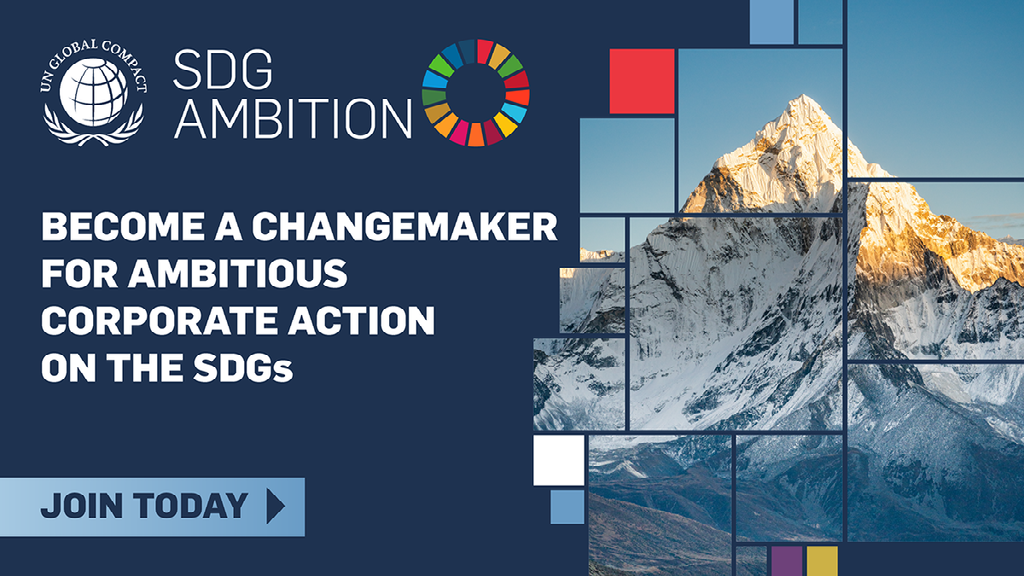 26 May 2025
26 May 2025
Company Name: CGS International Securities Singapore Pte. Ltd.
1. We are interested in learning more about your organisation’s sustainability journey. What led you to participate in the SDG Ambition Accelerator?
Daryl: Participating in the SDG Ambition Accelerator was driven by our commitment to enhance our sustainability efforts and align our business practices with the Sustainable Development Goals (SDGs). We were particularly attracted to the opportunity to select benchmarks linked to the Forward Faster initiative, which would guide us in developing innovative strategies that significantly increase our positive impact on the SDGs. Additionally, the Accelerator provided access to valuable resources, expert guidance, and a network of like-minded companies. This collaborative environment would enable us to share experiences, learn from others, and implement best practices in sustainability management.
2. How has participating in the SDG Ambition Accelerator improved your or your organisation’s progress and outlook on corporate sustainability?
Daryl: The progressive and structured approach of the programme, coupled with clear actionable recommendations made by the trainers, made it practical and useful. The framework
provided was also handy as a template to give us valuable insights into establishing metrics and performance indicators to track our sustainability progress for other sustainability-related agenda as well, beyond the selected SDG Ambition Benchmark, and helped to facilitate clear communication with stakeholders.
3. What SDG Ambition Benchmark did you choose? How did you decide which SDG Ambition Benchmark to focus on during the Accelerator?
Daryl: We chose Science Based Emissions Reduction in Line with a 1.5°C Pathway. Of the material ESG issues identified by my company, our GHG emissions footprint was something that we wanted to explore in greater detail. GHG emissions are a key material issue for my company. Especially coming from the financial sector, this area becomes very complex when considering Scope 3 emissions as well which is expected to be a significant component of a financial institution’s carbon footprint. It is also challenging to incorporate SDG 13 – Climate action into our operations. Failing to adequately measure and manage these financed emissions can lead to an incomplete understanding of the organization’s overall carbon footprint and climate-related risks This program was a good avenue to see what other companies are doing in this space, and to share knowledge and experience on how to tackle this issue.
4. What were the most significant lessons or takeaways from your journey in the Accelerator?
Daryl: The most significant takeaway was that for sustainability to be effectively championed within an organization, it must be woven throughout the entire value chain. It cannot be confined to a single area of focus; instead, ongoing stakeholder engagement and collaboration are essential to foster meaningful and progressive changes. Additionally, it is crucial to maintain a focused and strategic approach to the changes being implemented. For instance, targeting a specific SDG Ambition Benchmark is far more effective than pursuing initiatives in a disorganized or random manner.
5. What have you found to be the biggest benefits of participating in the Accelerator?
Daryl: Overall, the SDG Ambition Accelerator has been a transformative experience, equipping us with the mindset, skills, and network to accelerate our sustainability efforts and contribute meaningfully to the 2030 Agenda.
The Accelerator offered a well-structured curriculum that guided us through the process of integrating the SDGs into our core business strategy. It created a platform for us to connect with other like-minded companies committed to driving positive change. These new relationships have opened up opportunities for collaboration, knowledge sharing, and collective impact that we plan to continue pursuing beyond the program. And lastly having access to subject matter experts and facilitators who are deeply knowledgeable about sustainability and the SDGs was
invaluable. They provided us with the tools, resources, and support needed to navigate challenges and make informed decisions.
6. If you have already begun integrating the SDG Ambition Benchmark into your organisation, do you have any examples of the progress made so far?
Daryl: We have initiated the process of aligning our business operations with climate scenarios that adhere to internationally recognized standards. This will enable us to perform a gap analysis to determine the necessary steps for remaining on track with the 1.5°C pathway. At this stage, we are not ready to announce any specific actions taken. We have selected this pathway as a proactive measure, embarking on this journey early on. Currently, we are in the initial phases of compiling our greenhouse gas (GHG) inventory and exploring opportunities for emissions reductions.
7. How will you take your learnings from the SDG Ambition Accelerator forward to help achieve the Agenda 2030?
Daryl: We will continue to develop our sustainability strategy in line with the framework that was produced during this program, taking stock of how far away we are from a 1.5°C pathway and subsequently identifying opportunities to leverage on existing and new technology and systems to reduce our operational emissions. The alignment to the 1.5°C pathway is a high priority, especially in light of international disclosures converging towards the ISSB reporting standards.
8. What advice would you give to a company beginning the SDG Ambition journey?
Daryl; This program, offered exclusively to UN GCNS Members by the UN Global Compact Network, provides valuable resources, expertise, and networking opportunities. I encourage all my colleagues to take advantage of this platform, as it fosters collaboration with peers, which can significantly enhance learning and accelerate your progress.
I recommend that the company approach this journey with an open mind and a willingness to learn from fellow participants. It’s beneficial to select an SDG Ambition Benchmark that is more ambitious rather than one that is easily attainable. Engaging in this thought exercise and applying the course framework can help break down these goals into manageable steps, making them seem more achievable.
